|
There is a Permian age in the history
of the Earth.
It was over 300 million years ago. Once our land was covered
with the sea, planted with exotic trees and abundant in huge
reptiles, dinosaurs. Later on the sea stepped back and the
mountains started rising. Deep faults and inselbergs in the
primeval fold system of the earth's crust are a show of cosmic
proportions. It was the outer space people saw them from in
the twentieth century.
| |
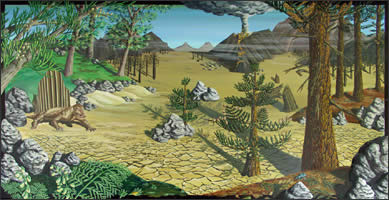
|
|
250-290 million years ago: there
is a Permian age in the history of the Earth...
|
Our land, severely magnificent in the
scenery and fabulously rich in the bowels of the earth, was
formed through this titanic work of Nature.
When travelling across the Urals, the English geologist R.
Murchison made out the original system of these geological
strata and called it Permian. Since 1845 the Perm symbol has
been put on all geological maps in the world. In the Permian
period Nature started storing up copper and ferrous ores,
coal, salt and oil for its future restless children.
Centuries passed, and people started making themselves home
on the earth. Little by little stone tools and weapons the
prehistoric people used were replaced by bronze ones. In the
environs of Perm archaeologists unearthed some artefacts of
the prehistoric Gari Culture - stone arrow tips and cutting
tools, flint and bronze knives, fishing hooks, bronze ornaments.
The Turbina tribes (named after the village of Turbina, a
part of the present Ordoenikidze District) had bronze and
silver weapons. In the Ananyino burial-grounds, iron knives
and swords, hoes and horse harness were discovered. The Ananyino
tribes of forest horse men were warlike while the Gladyenovo
prehistoric farmers cleared arable plots of trees and shrubs
in the forest, worked the land and invented a calendar of
their own to make their farming more accurate. They are called
after the village of Gladyenovo at the place of the present
Big Savino airport.
| |
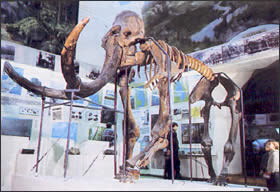
|
|
In 1915 the poet Ê. D. Balmont
saw a mammoth skeleton in Perm Scientific-Industrial
Museum that inspired his poems
|
Scythes, pestles, grain-grinding stones,
vessels, figurines of animals and birds were dug out there.
Their masters never thought of the man flying iron birds in
the sky! Who could imagine this in the third century ÂÑ or
in the fourth century AD?
Many generations had changed one another before prehistoric
villages, towns and crafts came into being. The Rodanovo Culture
left ploughs, long-handle scythes and millstones in our land.
The Rodanovo people had potters, carvers in bone, smiths and
foundrymen. War and toil made their life dangerous and hard,
but it also had joy and beauty the signs of which are numerous
ornaments found there. The ornaments de monstrate the Perm
animal style. The prehistoric people made every effort to
decorate their clothes and dwellings. "The silver from
beyond the mounts" glittered in their shrines.
| |
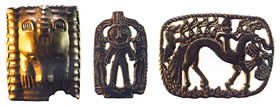
|
|
Ancient bronze ornaments in Perm
animal style
|
Russian peasants came to the Urals in
search of free land and freedom. They settled, built roads,
fought in wars. In the fifteenth-century Perm the Great was
already well-known. Its capital was Cherdyn. Single pioneer
farms, villages, towns and salt-works appeared in the north
of the region. But nobody settled by the Yegoshikha River
yet.
| |
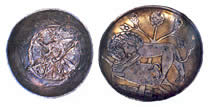
|
|
Sassanian silver got to the Kama
banks via ancient merchants' ways
|
Russia needed iron and copper. So, in
the early eighteenth century Vasily N. Tatishchev, the head
of the state mines and works, arrived to the Urals and chose
the place to built a copper foundry and a stronghold. Based
on his plans and drawings, the construction works were started
on the 4th of May, 1723.
The settlement on the Yegoshikha bank is a cradle of Perm.
Having taken over from Tatishchev, General Georg Wilhelm de
Gennin kept the work up and sent the first copper bar to the
Russian Empress Anna.
This was the beginning of the town upon the Kama that was
to grow up into a big industrial centre of Russia.
| |
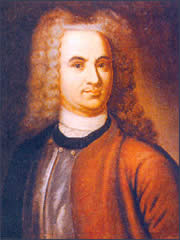
|
|
Vasily N. Tatishchev (1686
- 1750). The Russian statesman, scientist of encyclopaedic
knowledge, the founder of mines and works at the
Urals, the founder of the city of Perm
|
|
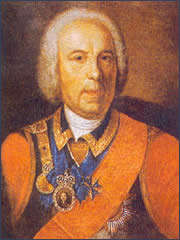
|
|
Georg Wilhelm de Gennin
(1676 -1750). He built a plant and settlement
on the Yegoshikha River in 1722
|
|
|
| |
|
|
| |
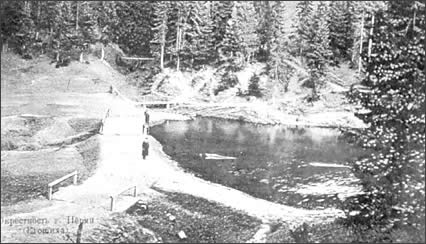
|
|
| |
The Yagoshikha River. Photo: the
second half of the 19th century
|
|
| |
|
|
| |
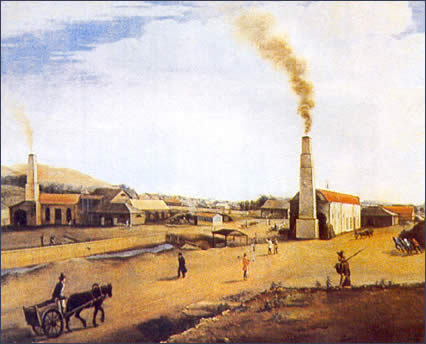
|
|
| |
V. Hudoyarov. Copper mines. The
first half of the 19th century
|
|
| |
Perm. The poem of the town:
Photo album. Publishing house «Pushka», 2003
|



